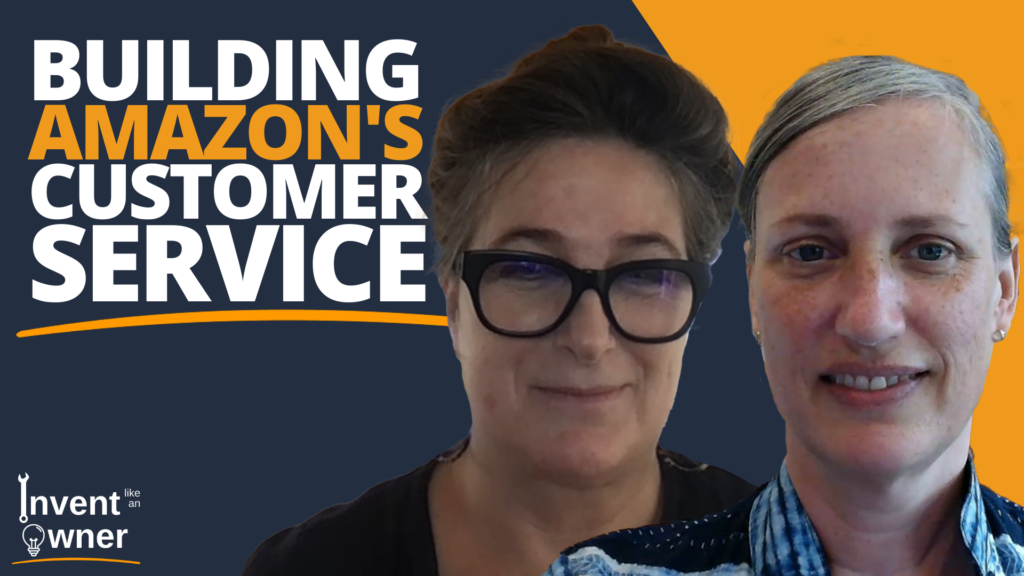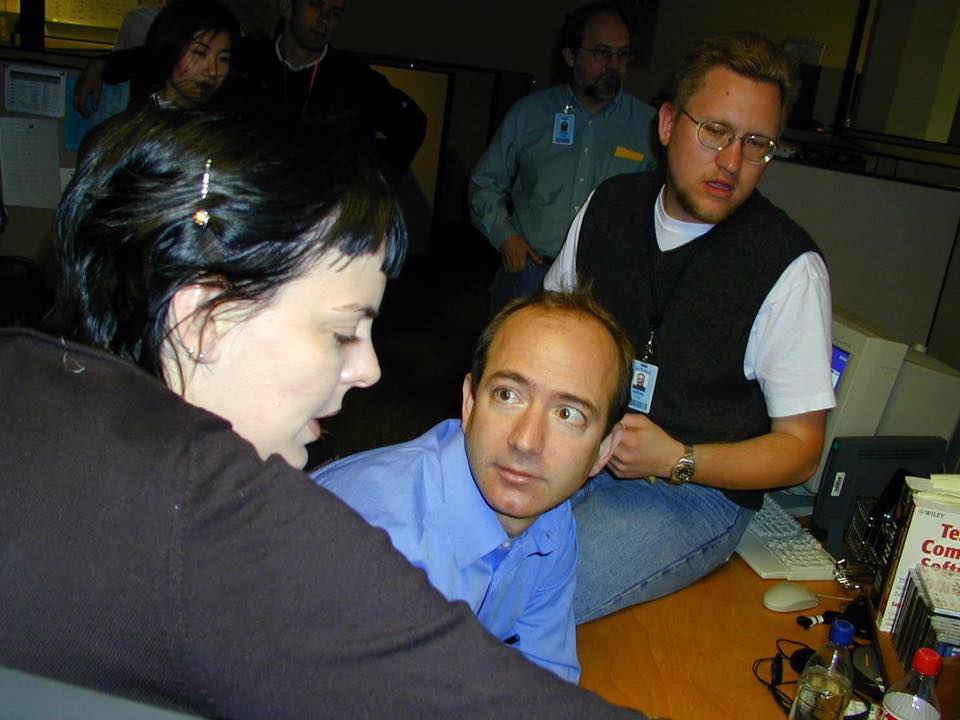
Today, in the Invent Like An Owner Podcast, Dave speaks with Colleen Byrum and Jane Slade, who both joined in 1996 (when Jane joined Amazon, they only had 3 Customer Service people!). The discussion surrounds how the Customer Service team wasn’t just the people in the Customer Service department, but everyone who joined the company. In the early days, almost all employees got trained in Customer Service support, even engineers and Senior Vice Presidents!
Colleen Byrum was the former director of Customer Service and former VP for Amazon.de and Amazon.co.uk. Jane Slade was the former director of Customer Service Strategy – Customer Experience, Product Development, Finance, and Operations. Recently, both were working at Freightera.
Episode Resources
- Colleen Byrum’s LinkedIn
- Jane Slade’s LinkedIn
- Freightera Freight Marketplace
- Jane Slade interview – Internet History Podcast, January 2015
- Subscribe to our Newsletter
- Find Dave on LinkedIn and Twitter
Memorable Quotes
Memorable Quotes from the Interview, with a focus on the problems faced by entrepreneurs:
One of Amazon's key success factors was the insistence on customer focus across the board. Nobody in the company owned customer service. We all owned customer service. — Colleen Byrum Share on X Something we did very intentionally is we treated customer service as an incubator for jobs elsewhere in the company, and this populated the company with people who really knew how things worked (for customers). — Colleen Byrum Share on X Amazon met with many customer service software vendors, and we told them our volume; they couldn't handle our numbers, even back then. We needed to move fast, so we made the decision that we needed to build it ourselves. — Jane Slade Share on X Hire brilliant people in customer service, who are very good communicators. Then feed the customer service information back into the machine to constantly improve the company as it scales. — Jane Slade Share on XFun Photos and Memorabilia
In the below photo, an exhausted Jess Scheibach (Customer Service Technology Program Manager) is demo-ing the ‘Arizona’ (Customer Self Service) launch for Jeff Bezos in 2000. Jeffrey Pratt is beside Jeff, and in the background from left to right are Dorothy Nichols, Gordon Waddell, and Andy Kegel.


What to Listen For:
- 00:00 Intro
- 02:03 What customer service support was like in the early days
- 04:09 Varying questions from Amazon’s early adaptors
- 05:58 Training for customer support was done basically side by side
- 06:57 Mid-May 1996 was the first flood of customers
- 08:40 Early customer support was phone-only before email became dominant
- 09:45 Jeff Bezos liked to hire smart people (advanced degrees were a good proxy)
- 12:00 The number one Customer Service question
- 12:32 What happened after the Wall Street Journal surge?
- 19:04 Jeff looked for intuitive qualities in people
- 20:57 Massive search to fill up shortage in Customer Service headcount
- 22:50 Amazon Customer Service support scaling up
- 25:33 Third party CS software could not keep up with the existing volume
- 29:15 Customers call because something went wrong
- 31:43 Figuring out which orders should go first
- 34:48 Key metrics in sending and tracking orders
- 36:18 Hands are full during Christmas and people are being sent to distribution centers
- 39:11 Customer Service is an incubator for other jobs in Amazon
- 40:32 Working around very small vendors for books
- 42:47 What’s the most memorable online complaint?
- 44:07 CS lessons for startup companies
You asked when Customer Connection was started. That happened in 2003 when I was VP of Customer Service. In the early days of Amazon, we had a hard time hiring as quickly as we needed to at the holidays in customer service and the fulfillment centers. So to meet demand, headquarters emptied out to staff those functions. As Operations matured, people from HQ didn’t need to work in CS or fulfillment on an emergency basis anymore. While that was a sign of better management, the s-team thought that the company was missing something valuable from those experiences. So the word came down that every level 7 and above manager would spend a week working in Customer Service every two years and a week at a fulfillment center at least once. I saw this as an enormous opportunity to change the relationship between CS and the rest of the organization. As the company grew, the close relationship between CS and the other divisions that Colleen described had frayed a bit. CS was physically in separate locations and reps couldn’t just walk down to talk to people in retail or engineering. It was much less common for CS reps to move to different areas of the company. There was little understanding of how hard it was to be a good CS rep and even less about how the actions of the rest of the company affected the number and severity of contacts we were getting. So we used Customer Connection to teach the organization that every day they were either eliminating contacts or creating them. We showed them where they could get the data about their businesses and the contacts they were generating. And by letting them see the frustration of customers firsthand, we made that experience tangible for them; they would know that there were people behind each and every one of those numbers. It was hugely successful for us and changed the posture of Customer Service in the company: helping drive down the contacts-per-unit metric and making managers launching or running businesses consider CS earlier in their plans. And I’d be remiss if I didn’t include a shout-out to Will North, the first person to lead Customer Connections in CS and a major driver of its success.
Thanks for the extra detail, Kim — I really enjoyed my CC time. I think I did it both in Seattle (Renton or Tacoma?) and also in Arizona at some point. And, every time I see a ‘date’ like this, it reminds me that I need to experiment with adding a ‘Timeline’ plugin to the website at some point!